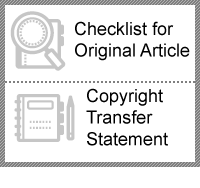| abstract |
| Background The ability to dress oneself independently is an important factor in improving the quality of life for the elderly, through psychological self-esteem as well as physical independence. While dressing aids to support the elderly have been developed In advanced countries as a result of an aging society, such equipment have not yet been actively distributed in Korea. The purpose of this study is to examine the types, methods, and characteristics of dressing aids for elderly in developed markets, and to provide basic data for the development of aids that improve the ability to dress oneself independently.
Methods First, a review of previous studies regarding the elderly and clothing as well as a theoretical review on the meaning of independent dressing ability was conducted. Next, after selecting 13 web sites that sell clothing aids, 324 clothing aids were collected to analyze the type, distribution, and use of the product.
Result Dressing aids can largely be divided into dressing and fastening aids: dressing aids are used for putting on tops, bottoms, socks, and shoes, and fastening aids are used for fastening button and zippers. Products for wearing socks and shoes were most widely distributed, followed by products for wearing tops, and products for bottoms. Assistive devices for wearing bottoms, socks, and shoes are essential to compensate for limitations in the range of motion due to aging, and assistive devices related to fastening are essential to compensate for the lack of sophisticated hand movements.
Conclusion The above products not only promote the physical independence of the elderly, but also bring psychological satisfaction and can further improve the elderly's quality of life through greater social participation. Therefore, it is essential that dressing aids for the elderly are developed and distributed in Korea. where these products are not yet common. |
|
|
| Key Words |
| 노인, 착의 보조기구, 독립적 착의, the Elderly, Dressing aid, Independent dressing |
|
|
|
 |
|






